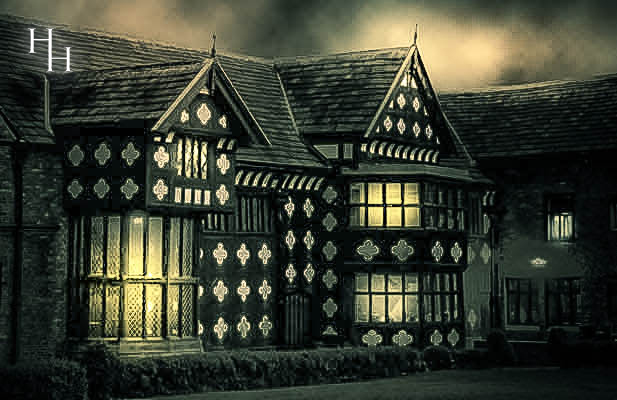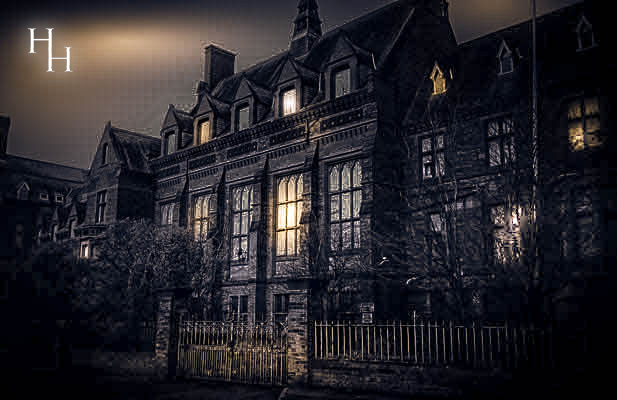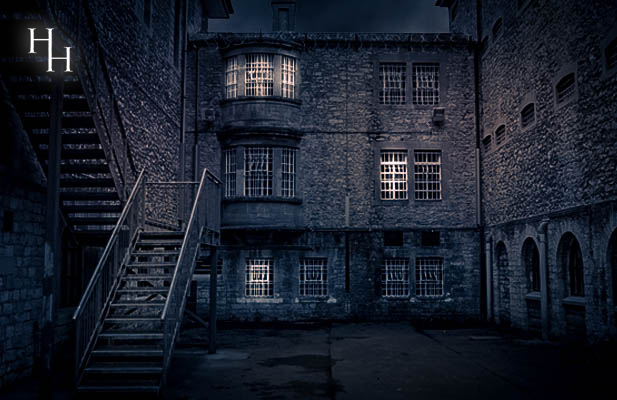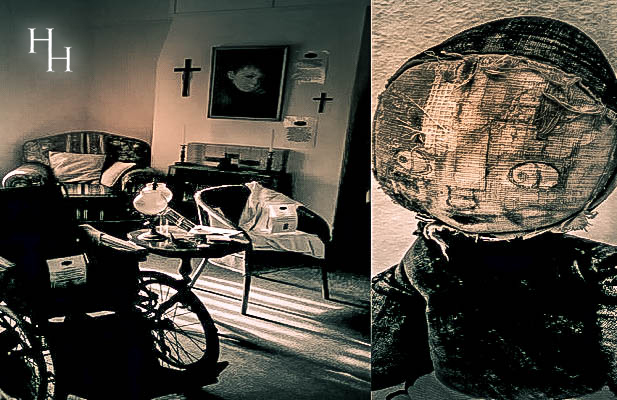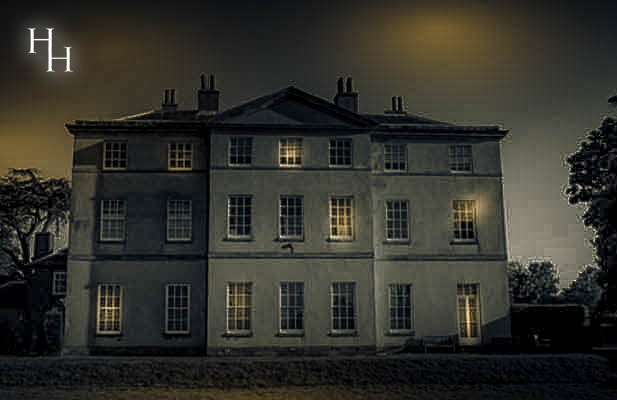Ordsall Hall - Salford, Manchester
With a phenomenal reputation for activity, an overnight ghost hunt here can be a daunting experience
Sorry, we do not have any events for this location at the moment. Please keep an eye on our website for future dates.
Ordsall Hall in Salford, Manchester is a truly haunted house with a phenomenal reputation for activity. We have experienced truly spectacular activity on ghost hunts at Ordsall Hall, with responsive bangs, people being grabbed and even poltergeist activity on many occasions.
An overnight ghost hunt here can be a daunting experience and only the bravest should attempt a vigil in the attic space. What will the many ghost cameras around the building capture during your ghost hunt? Join Haunted Happenings and together we will discover what lies within.
Ghosts of Ordsall Hall
The Hall has played an important role in local history and has been used for many different purposes and was purchased by the Salford Corporation in 1959 and opened to the Public in April 1972 as a period House and Local History Museum.
Ever since this time, there have been reports of ghostly sightings, unexplained phenomena and some staff even refuse to enter parts of the building alone The attic space is pitch black and unwelcoming and in the kitchen you can still see the well in which a child drowned and is believed to be responsible for the cries that are often heard.
Poltergeist activity has been experienced throughout the building and responsive knocks, extreme drops in temperature and strange light anomalies are not uncommon. It is also reported that the cries of a woman who threw herself from the balcony in the Great Hall are heard and that many who venture up there are overcome with feelings of sadness and grief.
History of Ordsall Hall
Ordsall Hall was once a moated Tudor Mansion and although the oldest parts were built during the 15th Century there has been a house on the site for over 800 years. Owned by the same family for over 300 years, The Manor bears the hallmarks of many different architectural styles.
Civil War played a part in a change of title after the Royalist owner was imprisoned and the family suffered severe financial hardship and the Mansion was sold many times during the next century. By the latter end of the 19th Century the moat had gone and the building was surrounded by fields and woods.
The Hall has played an important role in local history and has been used for many different purposes and was purchased by the Salford Corporation in 1959 and opened to the Public in April 1972 as a period House and Local History Museum
Ordsall Hall is a formerly moated Tudor mansion, the oldest parts of which were built during the 15th century, although there has been a house on the site for over 750 years. David de Hulton is recorded as the owner of the original hall, in 1251. The manor of Ordsall came into the possession of the Radclyffe family in about 1335, but it was not until 1354 that Sir John Radclyffe established his right of inheritance.
During the 1340s Sir John Radclyffe campaigned with Edward III in France, distinguishing himself at the battles of Caen, Cracy and Calais. As a reward for his service, the king allowed Sir John to take some Flemish weavers back to his Ordsall estate, where he built cottages for them to live in. English weaving skills at that time were poor, and textiles from Manchester were considered to be of particularly poor quality, so the Flemish weavers were employed in instructing the local weavers. They also started up a silk weaving industry, the foundation for Manchester's later cotton industry.
The original cruck hall was replaced by the present Great Hall in 1512, after Sir Alexander Radclyffe was appointed High Sheriff of Lancashire. The hall is typical of others built at that time in the northwest of England, although it is one of the largest, and is unusual for the period in having no wall fireplace. The hall has an elaborate roof structure, as in the similar Rufford Old Hall. There is a slightly later small room above the large oriel bay, which may be an early addition as at Samlesbury Hall Other alterations and additions were made during the 17th century, including a modest brick house added onto the west end in 1639, perhaps intended as a home for Sir Alexander's bailiff, as he himself no longer used the hall as his main residence by that time. The house was built to the timber-framed building, to which it was later joined.
During the Civil War Sir Alexander, as a Royalist, was imprisoned and suffered financial hardship. Reduced means eventually forced his heir, John Radclyffe, into selling the hall to Colonel John Birch in 1662, thus ending more than 300 years of his family's occupation. The Great Hall. The corridor to the left of the staircase leads to the Star Chamber. At the time of the 1666 hearth tax survey, Ordsall Hall was the largest house in Salford, with 19 hearths. The Oldfield family of Leftwich, near Northwich, bought the estate at the end of the 17th century, and in 1704 it was sold again, to John Stock, a trustee of Cross Street Chapel. His family were probably the last owners to reside at the hall. The Stocks lived in the hall's central section, comprising "a large hall, lounge dining room, a chapel, six rooms on a floor, with brewhouse, large courts, stable, etc", while the two wings were leased tenants from about 1700.
In 1756 the hall was sold to Samuel Hill of Shenstone, Staffordshire. Two years later, on Hill's death, the house passed to his nephew, Samuel Egerton of Tatton. The hall remained in occupation until 1871, the last residents being the descendants of John Markendale, who had taken over the lease of the building in 1814. The land surrounding the hall was used by the Mather family of cowkeepers and butchers for many years. During the last quarter of the 19th century Ordsall Hall became engulfed "in mean streets and industry". From 1875 Haworth's Mill rented the hall and used it as a working men's club.
The Great Hall was converted into a gymnasium after being cleared of the inserted floor and later partitions, and provision was made elsewhere for billiards, a skittle alley, and a bowling green. In 1883 the hall was bought by the Earl Egerton of Tatton, and restored during 1896 by the Manchester architect Alfred Darybshire at a cost of £6,000 . The restoration allowed the earl to found a clergy training school at the hall.
Provisions for the school included the construction of a church dedicated to St Cyprian in the north forecourt, and a new servants' wing on the south side. In 1908 the school was moved to Egerton Hall in 1908, changing its name to the Manchester Theological College. The men's social club at Ordsall Hall survived until 1940. During the Second World War the hall was used as a radio station.
In the 1960s the church and servants' wing built for the clergy school were demolished. Salford Corporation purchased Ordsall Hall from the executors of the Baron Egerton of Tatton in 1959. After major restoration work, it was opened to the public in April 1972, as a period house and local history museum.
Ordsall Hall is a formerly moated Tudor mansion, the oldest parts of which were built during the 15th century, although there has been a house on the site for over 750 years. David de Hulton is recorded as the owner of the original hall, in 1251. The manor of Ordsall came into the possession of the Radclyffe family in about 1335, but it was not until 1354 that Sir John Radclyffe established his right of inheritance.
During the 1340s Sir John Radclyffe campaigned with Edward III in France, distinguishing himself at the battles of Caen, Cracy and Calais. As a reward for his service, the king allowed Sir John to take some Flemish weavers back to his Ordsall estate, where he built cottages for them to live in. English weaving skills at that time were poor, and textiles from Manchester were considered to be of particularly poor quality, so the Flemish weavers were employed in instructing the local weavers. They also started up a silk weaving industry, the foundation for Manchester's later cotton industry.
The original cruck hall was replaced by the present Great Hall in 1512, after Sir Alexander Radclyffe was appointed High Sheriff of Lancashire. The hall is typical of others built at that time in the northwest of England, although it is one of the largest, and is unusual for the period in having no wall fireplace. The hall has an elaborate roof structure, as in the similar Rufford Old Hall. There is a slightly later small room above the large oriel bay, which may be an early addition as at Samlesbury Hall Other alterations and additions were made during the 17th century, including a modest brick house added onto the west end in 1639, perhaps intended as a home for Sir Alexander's bailiff, as he himself no longer used the hall as his main residence by that time. The house was built to the timber-framed building, to which it was later joined.
During the Civil War Sir Alexander, as a Royalist, was imprisoned and suffered financial hardship. Reduced means eventually forced his heir, John Radclyffe, into selling the hall to Colonel John Birch in 1662, thus ending more than 300 years of his family's occupation. The Great Hall. The corridor to the left of the staircase leads to the Star Chamber. At the time of the 1666 hearth tax survey, Ordsall Hall was the largest house in Salford, with 19 hearths. The Oldfield family of Leftwich, near Northwich, bought the estate at the end of the 17th century, and in 1704 it was sold again, to John Stock, a trustee of Cross Street Chapel. His family were probably the last owners to reside at the hall. The Stocks lived in the hall's central section, comprising "a large hall, lounge dining room, a chapel, six rooms on a floor, with brewhouse, large courts, stable, etc", while the two wings were leased tenants from about 1700.
In 1756 the hall was sold to Samuel Hill of Shenstone, Staffordshire. Two years later, on Hill's death, the house passed to his nephew, Samuel Egerton of Tatton. The hall remained in occupation until 1871, the last residents being the descendants of John Markendale, who had taken over the lease of the building in 1814. The land surrounding the hall was used by the Mather family of cowkeepers and butchers for many years. During the last quarter of the 19th century Ordsall Hall became engulfed "in mean streets and industry". From 1875 Haworth's Mill rented the hall and used it as a working men's club.
The Great Hall was converted into a gymnasium after being cleared of the inserted floor and later partitions, and provision was made elsewhere for billiards, a skittle alley, and a bowling green. In 1883 the hall was bought by the Earl Egerton of Tatton, and restored during 1896 by the Manchester architect Alfred Darybshire at a cost of £6,000 . The restoration allowed the earl to found a clergy training school at the hall.
Provisions for the school included the construction of a church dedicated to St Cyprian in the north forecourt, and a new servants' wing on the south side. In 1908 the school was moved to Egerton Hall in 1908, changing its name to the Manchester Theological College. The men's social club at Ordsall Hall survived until 1940. During the Second World War the hall was used as a radio station.
In the 1960s the church and servants' wing built for the clergy school were demolished. Salford Corporation purchased Ordsall Hall from the executors of the Baron Egerton of Tatton in 1959. After major restoration work, it was opened to the public in April 1972, as a period house and local history museum.




